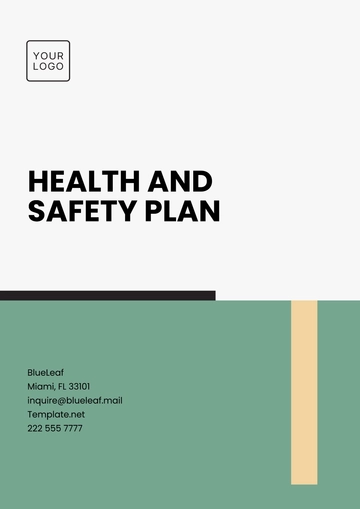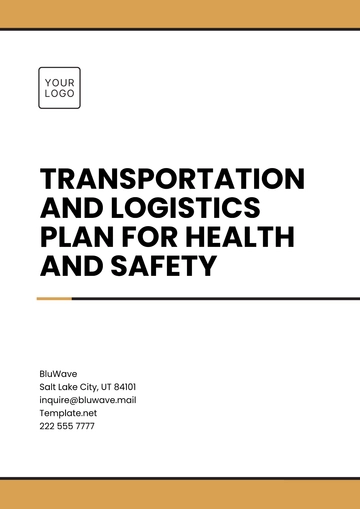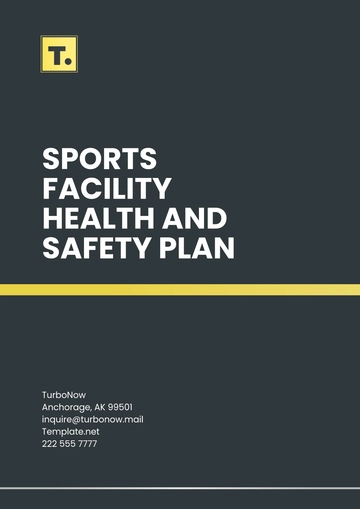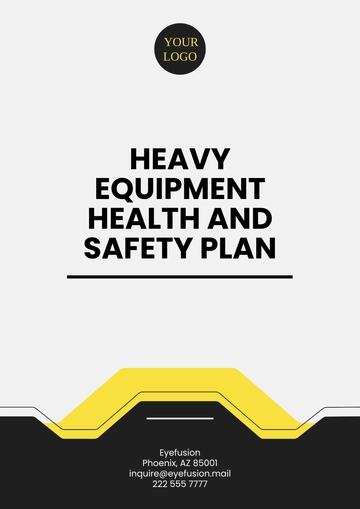Free Agriculture Safety Plan
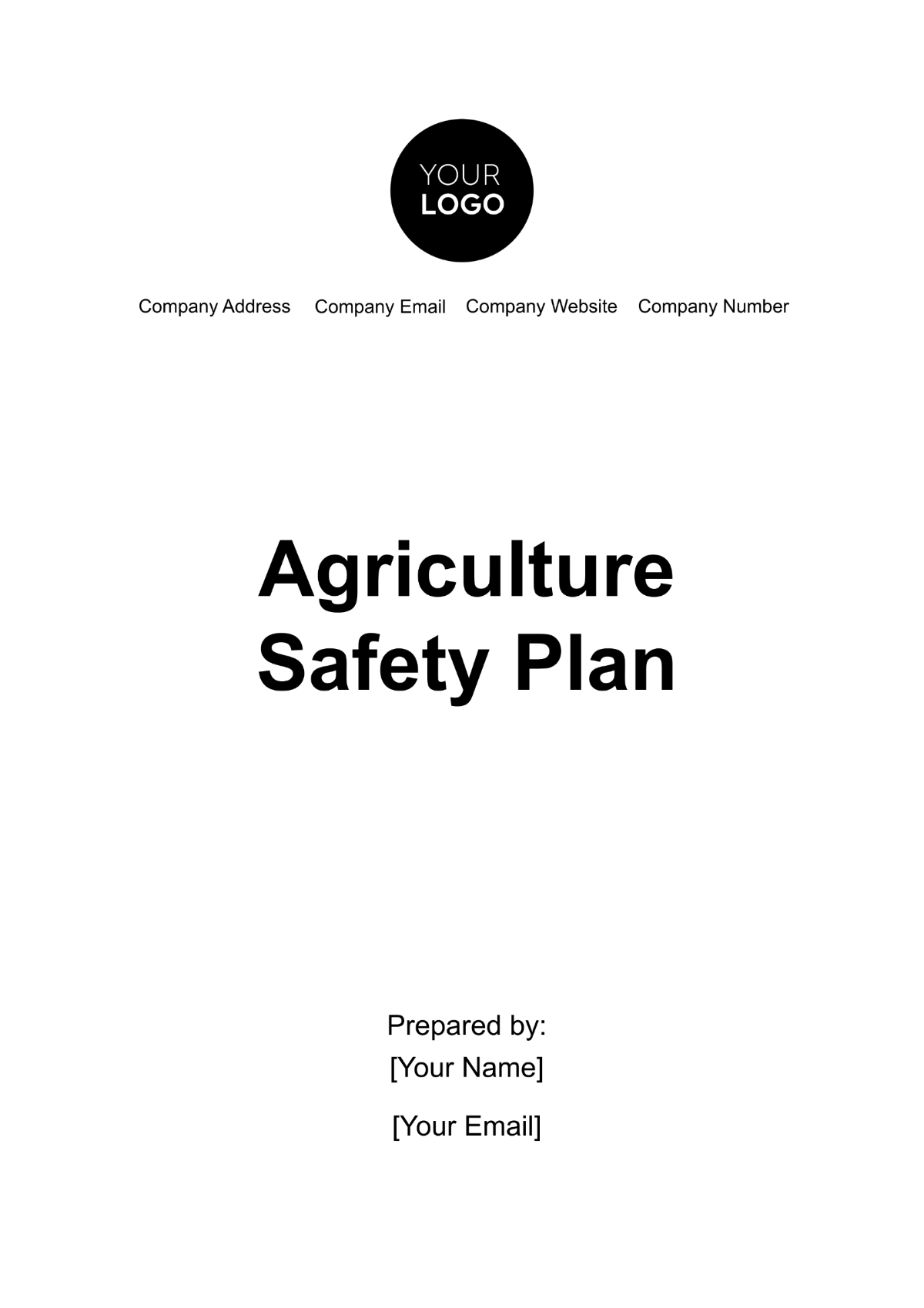
I. Introduction
Ensuring safety in agricultural operations is crucial not only for protecting the health and well-being of our workers but also for enhancing overall productivity and maintaining compliance with legal requirements. Agricultural work can involve various hazards, including operating heavy machinery, exposure to chemicals, and working in varying weather conditions. By prioritizing safety, [Your Company Name] aims to create a culture that values the health and safety of all employees, fostering a work environment where everyone can thrive.
This Agriculture Safety Plan serves as a comprehensive guide to identifying potential risks and implementing effective safety protocols tailored specifically for our agricultural settings. It encompasses best practices for equipment operation, chemical handling, personal protective equipment (PPE) usage, and emergency response strategies. By adhering to this plan, we not only comply with Occupational Safety and Health Administration (OSHA) standards but also set a benchmark for safety that can be followed industry-wide.
Moreover, this plan will evolve as we gather feedback from our workforce and stay updated on new regulations and technologies. Continuous training and communication will ensure that all team members are informed and prepared to address safety concerns proactively. Together, we can achieve a safer, more productive workplace that prioritizes the health and well-being of all employees at [Your Company Name].
II. Safety Training and Education
A. Employee Orientation
All new employees must undergo a comprehensive safety orientation program that includes general farm safety practices, emergency procedures, and specific job hazards.
Introduction to farm safety policies
Emergency procedures and contact information
Specific job hazards and safety measures
B. Ongoing Training
Continuous training programs should be held to ensure all employees are up-to-date with the latest safety protocols.
Monthly safety meetings
Annual safety refreshers
Specialized training for specific equipment or hazards
III. Equipment Safety
A. Machinery and Vehicles
Proper maintenance and inspection of machinery and vehicles are vital to preventing accidents. Employees must be trained in safe operating procedures.
Regular maintenance schedule
Pre-use inspection checklists
Safe operation training
The following table outlines the recommended inspection frequency and maintenance tasks for key equipment used in our agricultural operations at [Your Company Name].
Equipment | Inspection Frequency | Maintenance Tasks |
|---|---|---|
Tractors | Weekly | Check oil, tires, and hydraulic systems |
Combines | Before each use | Inspect belts, hoses, and clean filters |
ATVs | Monthly | Check brakes, tires, and steering |
B. Personal Protective Equipment (PPE)
Employers must provide appropriate PPE and ensure its use through training and supervision.
Gloves, safety glasses, and hearing protection
Respirators for pesticide application
Proper footwear and clothing
IV. Chemical Safety
Effective chemical safety practices are vital for protecting both employees and the environment from the risks associated with hazardous substances. Proper handling and storage of pesticides, along with the appropriate use of PPE, are crucial steps in minimizing exposure and ensuring safe application. Additionally, adhering to established rules for the storage and disposal of chemicals helps prevent contamination and accidents, promoting a safer workplace.
A. Pesticide Handling
Proper handling and storage of chemicals are essential to prevent exposure and accidents.
Labeling and proper storage of chemicals
Use of PPE during application
Emergency procedures for spills and exposure
B. Storage and Disposal
Rules for storing and disposing of chemicals must be strictly followed to avoid contamination and accidents.
Store chemicals in a well-ventilated, locked area
Dispose of chemicals according to local regulations
Keep an updated inventory of all chemicals
Ongoing training and vigilance in maintaining an updated inventory of all chemicals will further enhance safety protocols at [Your Company Name]. A commitment to these best practices not only ensures compliance with legal regulations but also fosters a culture of safety and responsibility among all employees.
V. Emergency Procedures
Establishing robust emergency procedures not only prepares employees for potential incidents but also fosters a culture of safety and preparedness at [Your Company Name]. Continuous training and updates to emergency protocols will enhance our ability to respond effectively, safeguarding the well-being of all employees and the integrity of our operations.
A. First Aid
A comprehensive first aid program will be established including trained personnel and properly stocked first aid kits.
First aid training for employees
Location of first aid kits
Emergency contact information
B. Fire Safety
Fire prevention and response plans must be developed and communicated to all employees.
Installation of fire extinguishers
Regular fire drills
Proper storage of flammable materials
The Agriculture Safety Plan at [Your Company Name] is designed to prioritize the health and safety of our workforce while enhancing operational efficiency. By implementing comprehensive safety protocols, including proper training, equipment safety measures, and effective emergency procedures, we are committed to creating a safe working environment that adheres to regulatory standards. Regular reviews and updates of this plan will ensure that we remain responsive to the evolving needs of our agricultural operations.
The success of this plan relies on the active participation and commitment of every employee. Together, we can foster a culture of safety that not only protects individuals but also contributes to the overall success of [Your Company Name]. A safe workplace is a productive workplace, and we are dedicated to achieving this goal.
- 100% Customizable, free editor
- Access 1 Million+ Templates, photo’s & graphics
- Download or share as a template
- Click and replace photos, graphics, text, backgrounds
- Resize, crop, AI write & more
- Access advanced editor
Establish safety protocols with the Agriculture Safety Plan Template, an editable and customizable document designed for agricultural operations. This template is available at Template.net and provides a professional and structured format to outline safety measures and procedures. Fully editable in our Ai Editor Tool, it ensures comprehensive planning for a safe work environment.
You may also like
- Finance Plan
- Construction Plan
- Sales Plan
- Development Plan
- Career Plan
- Budget Plan
- HR Plan
- Education Plan
- Transition Plan
- Work Plan
- Training Plan
- Communication Plan
- Operation Plan
- Health And Safety Plan
- Strategy Plan
- Professional Development Plan
- Advertising Plan
- Risk Management Plan
- Restaurant Plan
- School Plan
- Nursing Home Patient Care Plan
- Nursing Care Plan
- Plan Event
- Startup Plan
- Social Media Plan
- Staffing Plan
- Annual Plan
- Content Plan
- Payment Plan
- Implementation Plan
- Hotel Plan
- Workout Plan
- Accounting Plan
- Campaign Plan
- Essay Plan
- 30 60 90 Day Plan
- Research Plan
- Recruitment Plan
- 90 Day Plan
- Quarterly Plan
- Emergency Plan
- 5 Year Plan
- Gym Plan
- Personal Plan
- IT and Software Plan
- Treatment Plan
- Real Estate Plan
- Law Firm Plan
- Healthcare Plan
- Improvement Plan
- Media Plan
- 5 Year Business Plan
- Learning Plan
- Marketing Campaign Plan
- Travel Agency Plan
- Cleaning Services Plan
- Interior Design Plan
- Performance Plan
- PR Plan
- Birth Plan
- Life Plan
- SEO Plan
- Disaster Recovery Plan
- Continuity Plan
- Launch Plan
- Legal Plan
- Behavior Plan
- Performance Improvement Plan
- Salon Plan
- Security Plan
- Security Management Plan
- Employee Development Plan
- Quality Plan
- Service Improvement Plan
- Growth Plan
- Incident Response Plan
- Basketball Plan
- Emergency Action Plan
- Product Launch Plan
- Spa Plan
- Employee Training Plan
- Data Analysis Plan
- Employee Action Plan
- Territory Plan
- Audit Plan
- Classroom Plan
- Activity Plan
- Parenting Plan
- Care Plan
- Project Execution Plan
- Exercise Plan
- Internship Plan
- Software Development Plan
- Continuous Improvement Plan
- Leave Plan
- 90 Day Sales Plan
- Advertising Agency Plan
- Employee Transition Plan
- Smart Action Plan
- Workplace Safety Plan
- Behavior Change Plan
- Contingency Plan
- Continuity of Operations Plan
- Health Plan
- Quality Control Plan
- Self Plan
- Sports Development Plan
- Change Management Plan
- Ecommerce Plan
- Personal Financial Plan
- Process Improvement Plan
- 30-60-90 Day Sales Plan
- Crisis Management Plan
- Engagement Plan
- Execution Plan
- Pandemic Plan
- Quality Assurance Plan
- Service Continuity Plan
- Agile Project Plan
- Fundraising Plan
- Job Transition Plan
- Asset Maintenance Plan
- Maintenance Plan
- Software Test Plan
- Staff Training and Development Plan
- 3 Year Plan
- Brand Activation Plan
- Release Plan
- Resource Plan
- Risk Mitigation Plan
- Teacher Plan
- 30 60 90 Day Plan for New Manager
- Food Safety Plan
- Food Truck Plan
- Hiring Plan
- Quality Management Plan
- Wellness Plan
- Behavior Intervention Plan
- Bonus Plan
- Investment Plan
- Maternity Leave Plan
- Pandemic Response Plan
- Succession Planning
- Coaching Plan
- Configuration Management Plan
- Remote Work Plan
- Self Care Plan
- Teaching Plan
- 100-Day Plan
- HACCP Plan
- Student Plan
- Sustainability Plan
- 30 60 90 Day Plan for Interview
- Access Plan
- Site Specific Safety Plan
